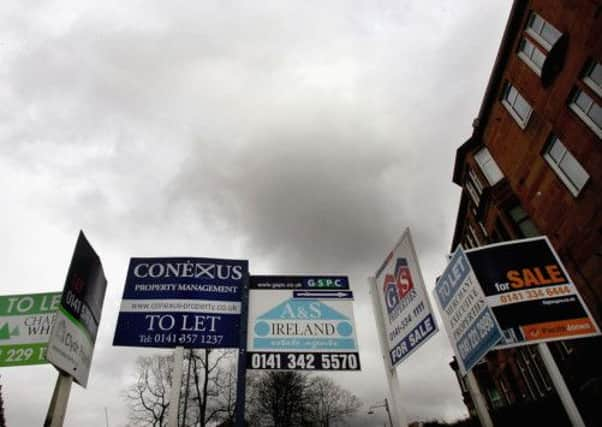House valuation and insurance come from different definitions


WHEN a Home Report is issued, there is often a obvious question from clients: why are valuations and insurance figures for a property so different?
There are two distinctly different figures within the home report under Section 4, Valuation and Conveyancer Issues. These are Estimated Reinstatement Cost for Insurance Purposes and Valuation. The figures can differ wildly, because the root of where the two figures originate is so drastically different. Without spending too much time debating the difference between price, cost, value and worth, it might help to take a closer look at the difference between these two figures and how they affect the buying or selling of your home.
Advertisement
Hide AdAdvertisement
Hide AdIt should be appreciated that surveyors have to work to quite specific definitions for both valuation and insurance figures, but let’s try and keep things simple. Basically, there is no correlation between the figures. There is a definition within the Terms and Conditions of the Home Report for Valuation, actually referred to as Market Value, and defined as “…the estimated amount for which a property should exchange on the date of valuation between a willing buyer and a willing seller in an arm’s-length transaction after proper marketing wherein the parties had each acted knowledgeably, prudently and without compulsion”.
To unpack this a bit further, the most straightforward explanation of “market value” is how much the surveyor believes the property will sell for or what an average person might pay for that property. This of course fluctuates with market forces. It is important to note that this figure in no way relates to the costs of construction.
In contrast, Estimated Reinstatement Cost For Insurance Purposes is the cost of replacing and rebuilding the property should it be destroyed. This varies between homes based on material, location and style. Whether it is built of timber, brick, or stone will of course make a difference. Location may also be an influencing factor but only if the location of the property would affect the cost of the rebuild – accessible Edinburgh versus the less accessible Outer Hebrides, for example. In addition, if the property has ornate or unusual features that might be difficult to replace or if it is a listed building, costs will increase proportionately. All of these factors need to be taken into account and generally this figure will be in line with inflation. A key point to emphasise is that this figure is based on a reinstatement basis, not replacement. This means that the figure has to allow for rebuilding the property to its original state using the original materials and construction techniques. In older buildings this often means that this figure is significantly higher than the cost of replacing the old building with a building that looks the same but utilises modern materials and construction techniques. The calculation must allow for replacing an original solid stone wall with a solid stone wall, not a timber frame with a stone cladding. As a result of this like-for-like replacement, some insurance figures can be very high in relation to value. The Estimated Reinstatement Cost For Insurance Purposes is a construction cost and has no relation to what someone might buy the property for, once it was rebuilt. Whilst individuals are prepared to pay for quality, they will only usually pay relative to market prices and not the cost to build. This figure is therefore there to provide a level of insurance cover needed to protect your new asset.
Therefore, Market Value will be the starting point for your offer and can form the basis of any mortgage, influencing your mortgage terms and repayments. Estimated Reinstatement Cost For Insurance Purposes will be the basis of the insurance you should take out to protect yourself and your asset. Your lender will normally insist that you insure your property for no less. Naturally, the higher the figure, the higher your premiums. • Ian Gray is head of residential property at Morton Fraser
SEE ALSO